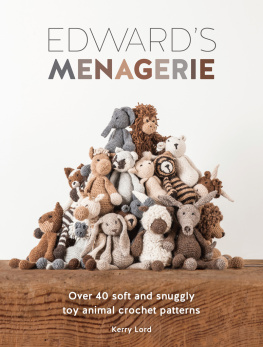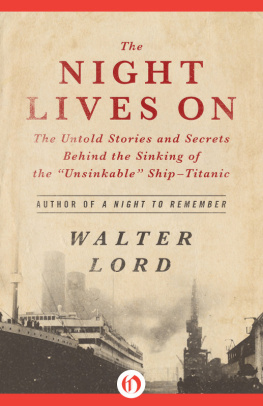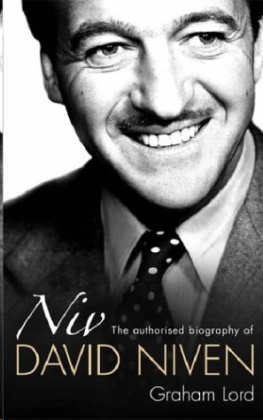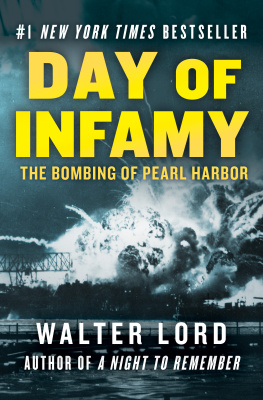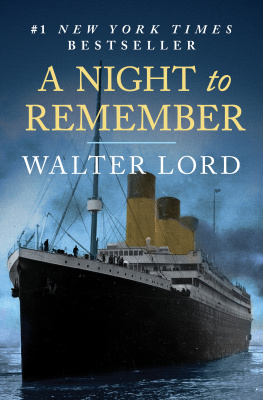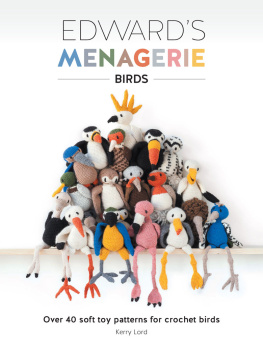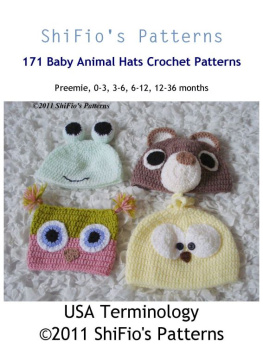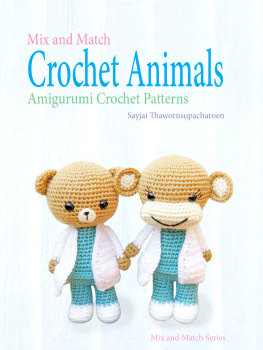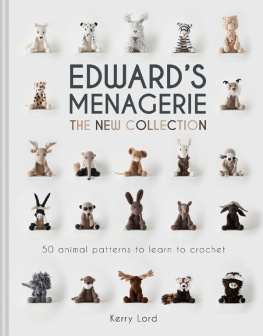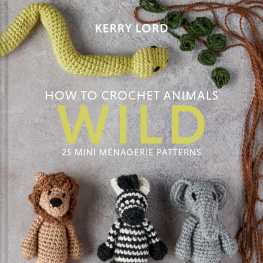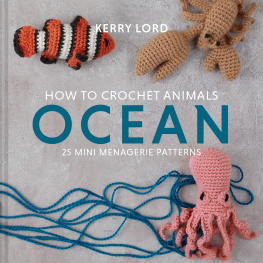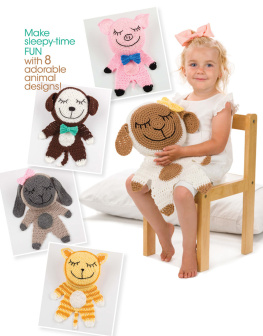Contents
Introduction
Edwards Menagerie is the year-long project of a self-taught newbie crocheter lucky enough to be given time to have fun with a seriously indulgent stash of yarn (see ). The resulting patterns are written in a style that may or may not be conventional, but every effort has been made to make the instructions as clear as possible for a beginner crocheter to pick them up and begin making. Step-by-step techniques have been included at the back of the book for the stitches used, so, even if you have never tried crochet before, you will be able to get started straightaway.
It was shortly before my forty-week due date that I first picked up a crochet hook. Since then, I have shelved my knitting needles and not looked back. In the fourteen days in which Edward kept me waiting, fourteen animals were made (albeit several were inside out and I still had little idea how to write down what I had done!).
In my first six months as a new mum with an expanding yarn business I only managed to add a few more animals to the mantlepiece. It was really only once I was living with a baby who wanted to interact and play with my creations that a new wave of enthusiasm took hold of me.
The animals have certainly evolved over the last year, and in the writing of this book many originals have been remastered as they have been tested with a more experienced eye.
as these patterns are a little more complex.
The patterns for Edwards Menagerie are designed for you and your friends and family to enjoy and are for private use only. I cant wait to see photos of your menagerie animals; make sure you share them using the hashtag #edsanimals, so I can find them.
There is no denying that I am addicted to and obsessed with making new animals, so I expect the next one will be along shortly (book, that is).
Enjoy,
Kerry
How to use this book
Edwards Menagerie has been divided into three levels to indicate how many techniques are used in the making of that animal. I would like to emphasize that you do not need a degree in anything to make a Level 3 animal. I would, however, suggest that you maybe try a Level 1 or 2 animal first if you are totally new to crochet.
Level 1
Animals using one colour and only chain, slip stitch and double crochet.
Level 2
Animals for which you need to do basic colour changing. Instructions for this can be found in the section.
Level 3
Animals that require more complex colour changing and those that require the loop stitch. Again, instructions for this can be found in the section.
The animals in Edwards Menagerie are a family and thus share common body shapes. You will need to refer to the page when making any of the animals in this book. You will notice that this page has a black edge to help you find it quickly as you are working through the pattern. After you have made one animal, you will pick up the pattern quickly (and become very familiar with your six times table!).
To keep each pattern simple and concise, I have omitted the stuffing and sewing-up instructions, as these are common to all. Please refer to the section before you start, so that you are aware of the correct order and place in the pattern to do this.
The patterns all use British crochet terminology and common crochet abbreviations. US conversions and full explanations can be found in the section.
Yarns and other materials
My yarn story
I have had the privilege of growing up on a British alpaca farm in a picturesque area of rural Warwickshire, England, named Toft. My parents bought alpacas back in 1997 at a time when only eccentrics could identify these animals, and there were fewer than 500 camelids in the whole country. Since then, the Toft alpaca stud farm has grown in size and reputation along with the British alpaca livestock industry, and resident alpacas in the UK now number more than 40,000. Toft is a place where my son Edward for whom this menagerie is named will be able to make weekly visits, and where he can enjoy taking part in the daily rituals of farming these beautiful animals.
I commissioned the first batch of TOFT yarn, made from the fleeces of our own herd of alpacas, in 2006. At the time, I was utterly oblivious to the world of fibre, yarn and craft. Since then, TOFT has grown to become a renowned luxury yarn brand committed to superior-quality 100 per cent British alpaca and wool yarns, and its design range is characterized by an all-natural colour palette.
My yarn choice
Edwards Menagerie has been crocheted in TOFT yarn. This collection of animal patterns showcases the soft handle of the natural fibres, the depth and range of undyed tones and the tactile appeal of the resulting fabric. The creation of Edwards Menagerie was driven by an intimate knowledge and understanding of TOFT yarn. Naturally, I recommend using TOFT yarn to guarantee that your animals look just like mine, but the patterns will work in any other non-fancy spun yarn. The resulting animals will vary drastically should you choose to work up an elephant in blue acrylic yarn, or a lion in yellow cotton, but the patterns will work if you match your hook size to your yarn and check that your tension makes a dense, crisp fabric.
I hope these patterns inspire you to experience the pleasure of indulging in a luxury yarn. Its all about having a good yarn on your hook, whether youre bringing one of these patterns to life for yourself or for someone else.
You will need
To make just one, or indeed all, of the animals in this book, the requirements list is the same:
Yarn in appropriate colours and quantities (see )
Black contrast yarn for face details
One hook in an appropriate size to the yarn being used (see )
Stuffing material
Scissors
Sewing needle
Yarn colours
The animals in this book have been made using a palette of ten natural colours. These subtle shades of creams, browns and greys provide all you need. The colour recommendations depicted are not fixed rules. The beauty of the spectrum of undyed yarn is not only that it is animal coloured, but also that each yarn colour is interchangeable with a myriad of substitutes. My advice on selecting colours would be not to spend too long staring at images on a computer, but to use your instincts and your minds eye to achieve the best results.
Some animals use only one colour, others two, and a handful combine three for a more detailed finish. The suggested colours are stated at the start of every pattern, as simple contrasts of Light, Medium and Dark.
Materials for stuffing
I have chosen to stuff the animals with a synthetic high-loft polyester toy stuffing, despite their 100 per cent natural yarn outer. Rather than this being a contradiction, experience has taught me that natural wool stuffing tends to compact over time, and that leads to very floppy and saggy animals. The synthetic stuffing also makes the animals fully hand-washable.

